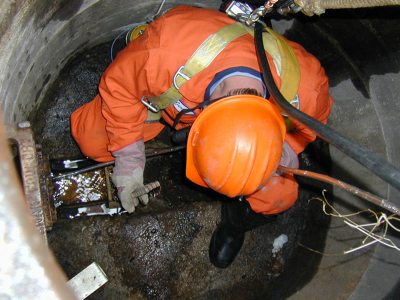Detecting problems with your pipes can save you from further costly damage and repairs. Knowing how to correctly identify if you have a broken pipe will help you establish when there is a problem that needs to be resolved by a professional engineer.
How to Identify a Broken Pipe
There are a few tell-tale signs that may indicate you have a broken pipe, including:
- A higher water bill – if you have found that your water bill is abnormally higher than usual, this may indicate a broken pipe.
- No water – If you notice that no water is coming from your washing machine or dishwasher when it is turned on, or you have noticed improper water pressure, this could mean that your pipes may be frozen, or there may be a broken pipe underground.
- Poor water quality – If you have noticed that your water suddenly changes in colour or begins to smell, this is a clear indicator that your pipes have started to deteriorate or corrode. In this situation it is better to have your pipes replaced to prevent burst pipes.
- Different sounds – Specific noises can often indicate problems with your pipes. For instance, whistling noises can generally indicate an increased water pressure due to the pipes not being able to contain the volume of water; this can be from a dent in the pipe. Bubbling noises may be heard when the sink is used, this can indicate that there is air that cannot escape the sewer lines. Those that suspect they have a broken pipe should also listen for banging or clanking noises, this can mean that the pipes are too loose and could potentially result in a burst pipe.
- Unpleasant odours – If your drain, sink or any other area of your home emits an unpleasant odour (especially on the ground floor of your home), this can potentially be a sign that sewage is not being efficiently transported from your pipes to the municipal sewer lines.
How to Confirm an Underground Water Leak
Checking your water meter is a good way of confirming any suspicions that water may be leaking underground. To check your meter, firstly you will need to turn off any of the appliances or fixtures that use water (but do not turn off the shut-off valve). Then, simply open the meter’s cover so that you can see the gauge, making a mark of where the needle is pointing. After around 30 minutes (with all appliances still off), identify if the needle has in fact moved on the water meter dial. If it has, this is a sure way of confirming that you have a broken pipe or fitting problem underground.
Fixing Underground Pipework 
There are many different solutions to fixing underground pipework, depending largely on the location of the broken pipe. A simple solution that is popular in areas of limited access is the use of a polyester resin. This resin can be used from one small access point, saving potentially costly construction work.
How does it all work?
Firstly, a CCTV camera is used to inspect the pipework and measure the space so that the appropriate amount of resin is used. After this, the resin is then fed into a felt liner. The liner is then compressed into an inversion unit and fed into one end of the pipe to be relined; the balloon like calibration tube is also fed into the pipe after being compressed into the inversion unit. The inversion unit then fills the Calibration tube with compressed air, forcing the resin into place in the pipe. Both the pressure of the inflated tube and the heat of the air inside it, harden the resin into place. Finally, the tube is then deflated and removed. It is worth noting that another CCTV inspection is necessary after this, in order to ensure the pipe has been relined successfully without any problems.





